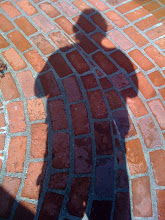
We spent the last weekend of April at the Jazz & Heritage festival in New Orleans. I spent the early 70’s there in college and have visited many times since, but this was my first trip back since the devastation that came down during Hurricane Katrina. On the quick flight from JFK I made a mental note that I would refrain from asking anybody about “the storm”. I did have a million questions, but hadn’t these people been through enough? I figured that they’d been asked the same questions by every visitor who’d been there since that morning of August 29, 2005.
My resistance to asking questions was moot. No sooner than I had gotten my hand on a cool Albita the talk began. The people of New Orleans want to discuss the devastation. They call it Katrina, The Storm, The Failure of the Levy System, but what ever they call it…they definitely want to talk about it. The gallery owner on Royal Street, told me about the ruined floors in his home but smiled that his gallery was unscathed. My college pal Patricia Schrieber told me about her father’s Lake Ponchatrian home that had been in her family for generations had succumbed to the raging waters. It was Patricia who over dinner at the uptown local eatery Clancey’s explained how the levies failed and eventually the lake (Lake Ponchatrain) flowed into the city. There were countless stories of rotted food, spoiled rare vintages, and lost loved ones; either killed by the waters or whose spirits were killed and abandoned the city that had been there shelter.
Katrina serves as a time line landmark. “Johnny’s first communion, was that before or after the storm.” Vince when were you here last, before or after Katrina.”
As I ate very expensive and very delicious seafood in the French Quarter, Smokie, the chef at Charity hospital, vividly told me about her attempts to keep the food services going at the hospital, feeding the infirmed and staff as the evacuation carried on, and then her airlift by helicopter from the roof of the abandoned institution. As we walked out of the restaurant, Smokie told me about what she found an interesting phenomenon. Sunflowers. Months after the waters receded and the debris was slowly cleared, Sunflowers started popping up all over town. Smokie painted a vivid picture of this sudden, random blooming. The neutral ground where the then temporarily shut down trolley made its downtown to uptown voyage had sunflowers breaking through the barren soil where grass once flourished. Flower boxes that held the remnants of ornamental evergreens sprouted the blooms and in the middle of garden district lawns sunflowers appeared.
Was this divine providence or the hallucinogenic imagination of a woman, who after days of feeding frightened hospital patients, needed to see a bright spot?
Perhaps all of these factors contribute to the sunflowers that are popping up in New Orleans, but I did uncover one definite one.
Project Sprout an environmental group, recently planted its first test plots of sunflowers in New Orleans, These plots of land were essentially vacant lots which had been turned into dumping ground for all kinds of debris. In addition to all the list of horrific aftermath problems Katrina contributed to, the ph levels of the soils show inordinate amounts of heavy metals. Research has shown it may take as much as a thousand years to actually clean a heavily contaminated plot in New Orleans. But there's also some research that comes out of Dillard University that has shown that in a couple of growing seasons a lot in New Orleans moved from being unsafe according to EPA standards to a safe level for alternative uses. "
Once the plants take out the toxins, they are themselves contaminated, with most of the contamination held in the stalk. When sunflowers are planted in soil with high levels of lead, the stalks need to be treated as a biohazard.
The sunflower seeds can be used to make biodiesel. Its important to remember that it takes quite a few sunflower seeds to make a tank of fuel for the average automobile, but their heart is in the right place.
I love the idea of cleaning the soil by planting flowers (I understand that the canola plant has the same cleansing effect.), but I also feel that when you pass a mass planting of vibrant sunflowers it makes you happy and gives you a jolt of hope that failed systems and politics just can’t.












